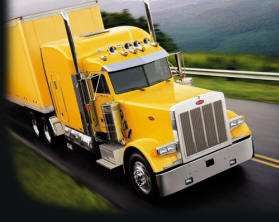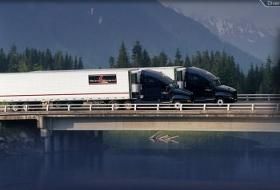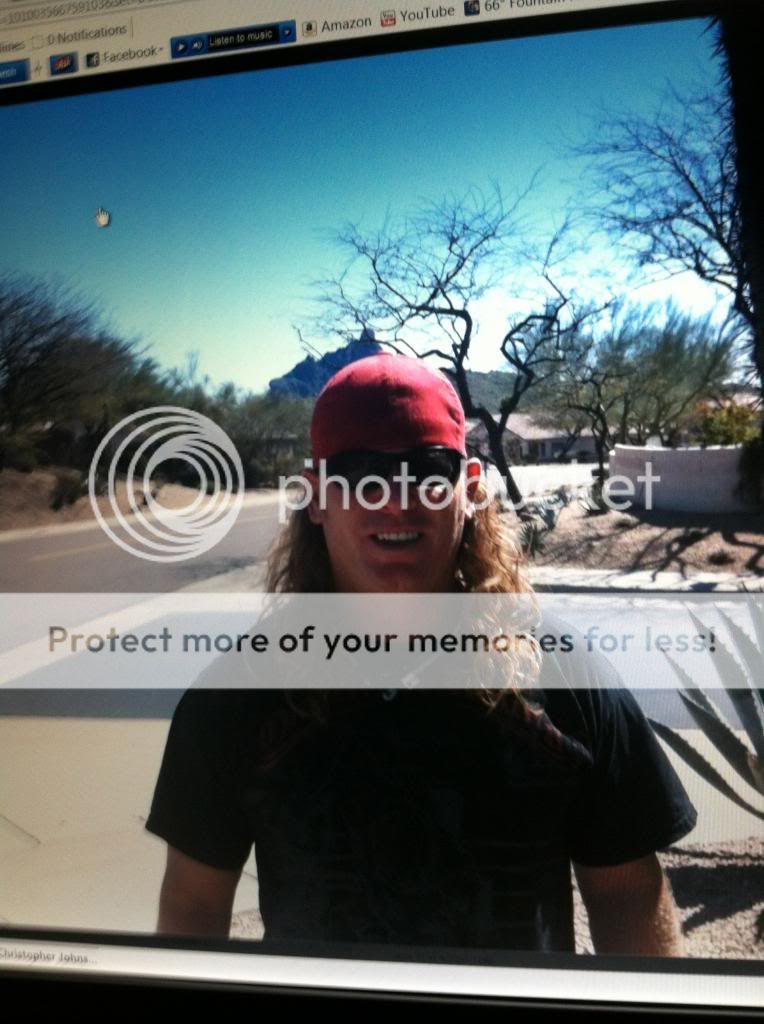Shifting Is Really Hard!
Topic 3240 | Page 1

Every standard shift car or truck I've owned has had a sweet spot where the clutch was concerned. Too far in or too far out and the arguments with the shifter abound. Find the sweet spot and the shifting is smooth as silk. I'm guessing it's the same story with these big rigs. My suggestion is to keep working at it until you find that sweet spot for the truck you are learning on. I have no doubt that the experienced drivers around here will be along to give you some better advice than I can, but maybe this will help you.

Apply at US Xpress - they'll give you an automatic. Right, ThinksTooMuch? 

In all seriousness, I'm sure you'll get the hang of it. It's not like you've never driven w/ a stick before. Probably will just take a little time. Who knows, maybe I'll be posting the same thing once I start shifting! I learned how to shift a manual transmission about 20 years ago. I know it's not the same as a truck, but I've actually been practicing not only floating the gears in my little Toyota Yaris, but also double clutching. Kind of fun :)
Double Clutch:
To engage and then disengage the clutch twice for every gear change.
When double clutching you will push in the clutch, take the gearshift out of gear, release the clutch, press the clutch in again, shift the gearshift into the next gear, then release the clutch.
This is done on standard transmissions which do not have synchronizers in them, like those found in almost all Class A trucks.
Double Clutching:
To engage and then disengage the clutch twice for every gear change.
When double clutching you will push in the clutch, take the gearshift out of gear, release the clutch, press the clutch in again, shift the gearshift into the next gear, then release the clutch.
This is done on standard transmissions which do not have synchronizers in them, like those found in almost all Class A trucks.

You'll get it eventually, it just takes practice. Even experienced drivers grind gears occasionally. Good luck.

I had trouble in school also. Got through it an thought I was good to go until..... I got in a good truck and was with a trainer. The first day he was so on edge because I was having so much trouble shifting he asked if I could float the gears. I said sure. Been doing that since I started driving farm equipment as a young boy. I have not used the clutch since except of course when stopping and on the occasion it is needed to downshift. Get through the school and the test as best you can and then float, float, float. Once you get the hang of it you won't go back to the clutch.
Float The Gears:
An expression used to describe someone who is shifting gears without using the clutch at all. Drivers are taught to "Double Clutch" or press and release the clutch twice for each gear shift. If you're floating gears it means you're simply shifting without using the clutch at all.

You'll get it eventually, it just takes practice. Even experienced drivers grind gears occasionally. Good luck.
We experienced drivers do not grind gears. After 16 years I don't grind gears. I only scratch them.
What's the difference you might ask? EVERYONE else grinds them.

I haven't driven truck in twenty plus years but I imagine the transmissions are similar over the years. Its all about RPMs matching. You have to get a feel for how your road speed matches up to the motor's RPMs. If your going too slow or too fast the gears are gonna complain and the thing just won't go in. Try watching the tach while your trainer is shifting and that will give you a target RPM range for the engine. It still takes practice but if you are too far off on matching up those two things it ain't ever gonna go in now matter how hard you try . . .
Jopa

HOS:
Hours Of Service
HOS refers to the logbook hours of service regulations.
Thanks everyone. I will try harder today and see if it sinks in better. Or maybe I will not think it out so much and see what happens. I will update tonight with my results.
I've actually been practicing not only floating the gears in my little Toyota Yaris, but also double clutching
A little double-clutching in a 4 wheeler won't hurt but be aware of the fact that you're going to wear out your synchronizers a little faster doing that. Every time you push in the clutch the synchronizers will be activated to match up the transmission shaft speed with your engine RPM.
Double Clutch:
To engage and then disengage the clutch twice for every gear change.
When double clutching you will push in the clutch, take the gearshift out of gear, release the clutch, press the clutch in again, shift the gearshift into the next gear, then release the clutch.
This is done on standard transmissions which do not have synchronizers in them, like those found in almost all Class A trucks.
Double Clutching:
To engage and then disengage the clutch twice for every gear change.
When double clutching you will push in the clutch, take the gearshift out of gear, release the clutch, press the clutch in again, shift the gearshift into the next gear, then release the clutch.
This is done on standard transmissions which do not have synchronizers in them, like those found in almost all Class A trucks.

I haven't driven truck in twenty plus years but I imagine the transmissions are similar over the years. Its all about RPMs matching. You have to get a feel for how your road speed matches up to the motor's RPMs. If your going too slow or too fast the gears are gonna complain and the thing just won't go in. Try watching the tach while your trainer is shifting and that will give you a target RPM range for the engine. It still takes practice but if you are too far off on matching up those two things it ain't ever gonna go in now matter how hard you try . . .
Jopa
not to be mean but I can get it into gear no matter how fast or slow brut strength is all but not recommended
HOS:
Hours Of Service
HOS refers to the logbook hours of service regulations.New Reply:
New! Check out our help videos for a better understanding of our forum features

















Preview:
This topic has the following tags:
Attending Truck Driving School Hard Lessons Learned On The Road In Training Safe Driving Tips Truck Driver Training







 TT On Facebook
TT On Facebook
So, I have completed day 9 of school and we have finally started shifting. After about 45 minutes of shifting practice I still have many problems changing gears. Maybe it is because I have driven a manual transmission for the past 15 years and have developed a lot of bad habits. Maybe it is because I have no rythym. I keep grinding gears whether I go fast or slow, push in the clutch all the way or only a few inches. If I don't get it soon I may have to consider becoming an o/o so I can drive an automatic. Just kidding.
On a bright note, I passed my pre-trip inspection and air brake test today so now I can give my full attention to learning to shift. Backing in Virginia is very easy with just a straight line and a curve to do in order to test at DMV. I hear my mentor with teach me the other maneuvers.
Going to sleep on it and dream about backing now.
Pre-trip Inspection:
A pre-trip inspection is a thorough inspection of the truck completed before driving for the first time each day.
Federal and state laws require that drivers inspect their vehicles. Federal and state inspectors also may inspect your vehicles. If they judge a vehicle to be unsafe, they will put it “out of service” until it is repaired.
Dm:
Dispatcher, Fleet Manager, Driver Manager
The primary person a driver communicates with at his/her company. A dispatcher can play many roles, depending on the company's structure. Dispatchers may assign freight, file requests for home time, relay messages between the driver and management, inform customer service of any delays, change appointment times, and report information to the load planners.DMV:
Department of Motor Vehicles, Bureau of Motor Vehicles
The state agency that handles everything related to your driver's licences, including testing, issuance, transfers, and revocation.